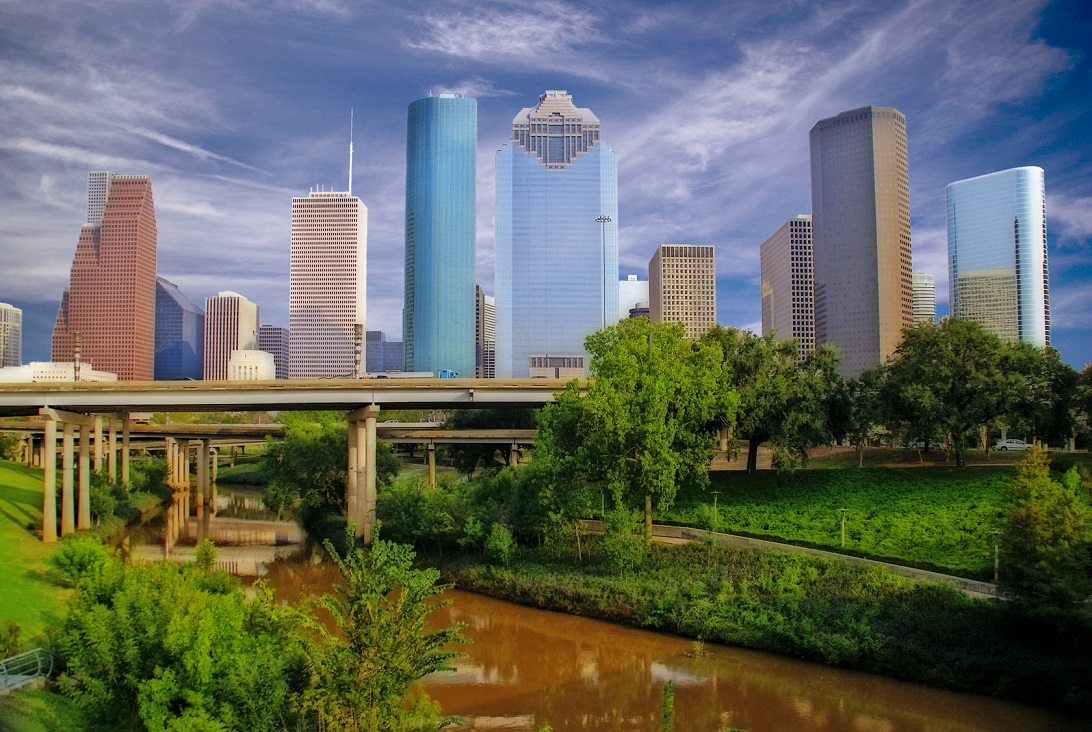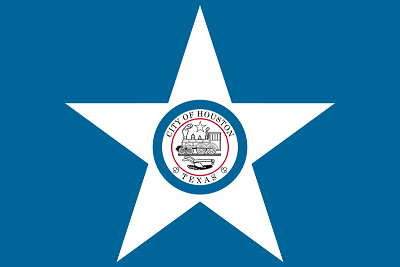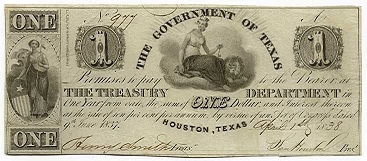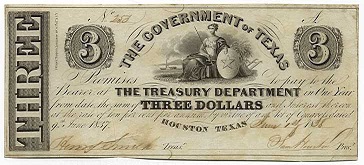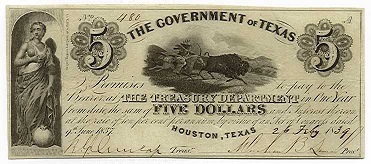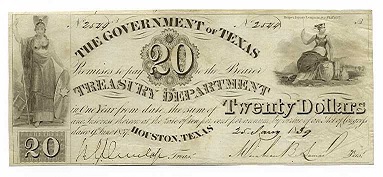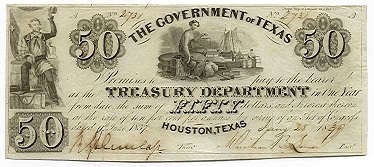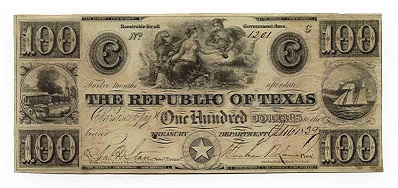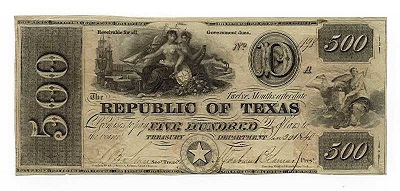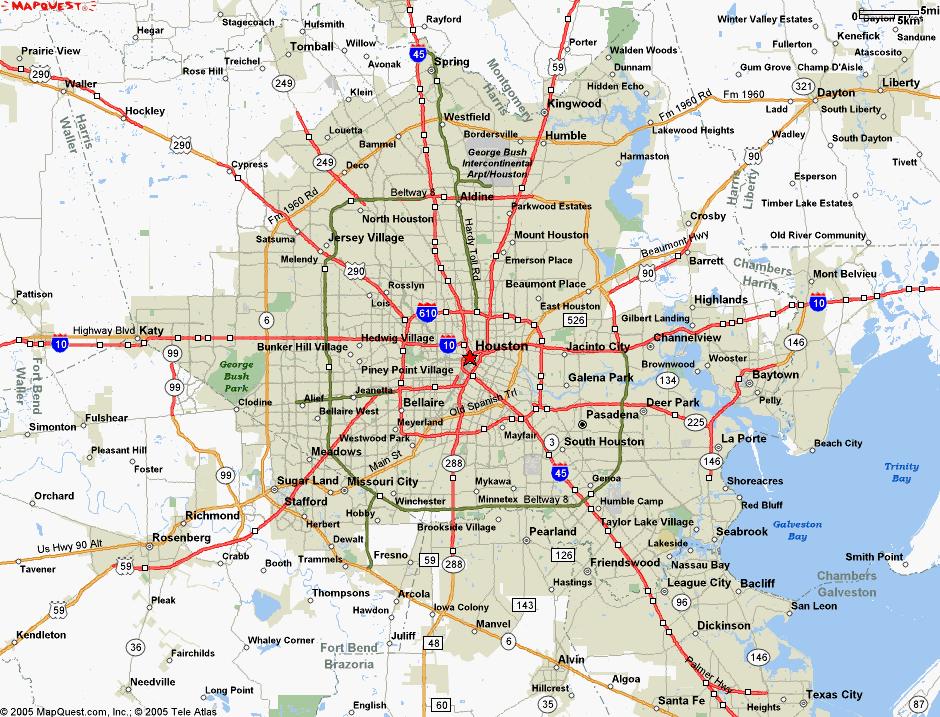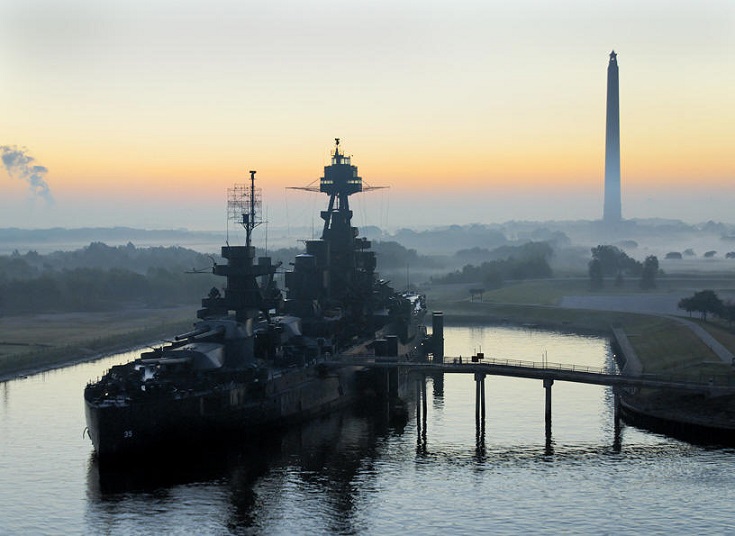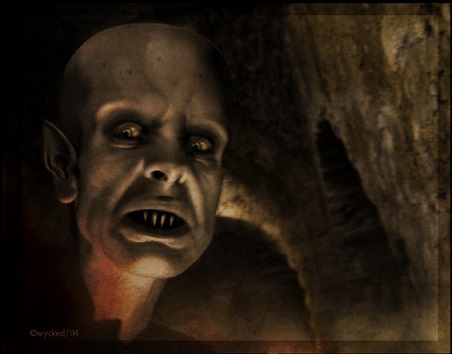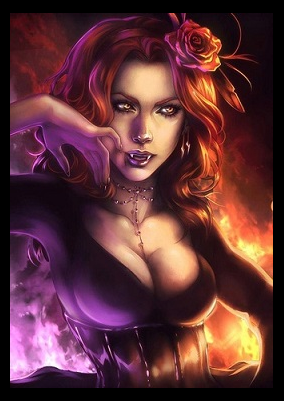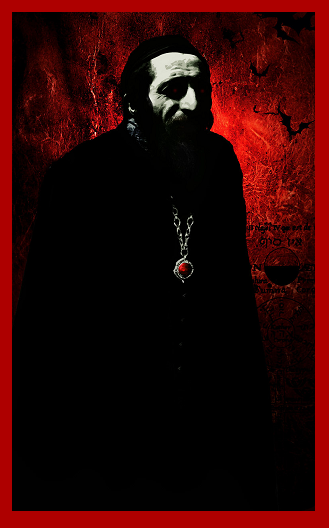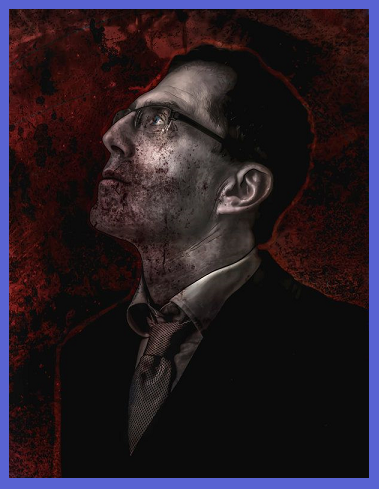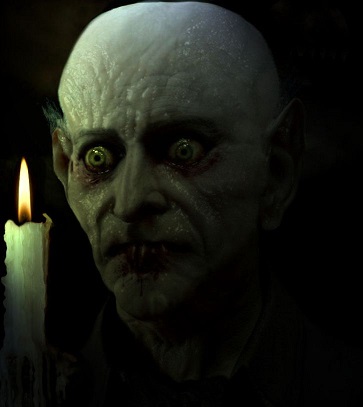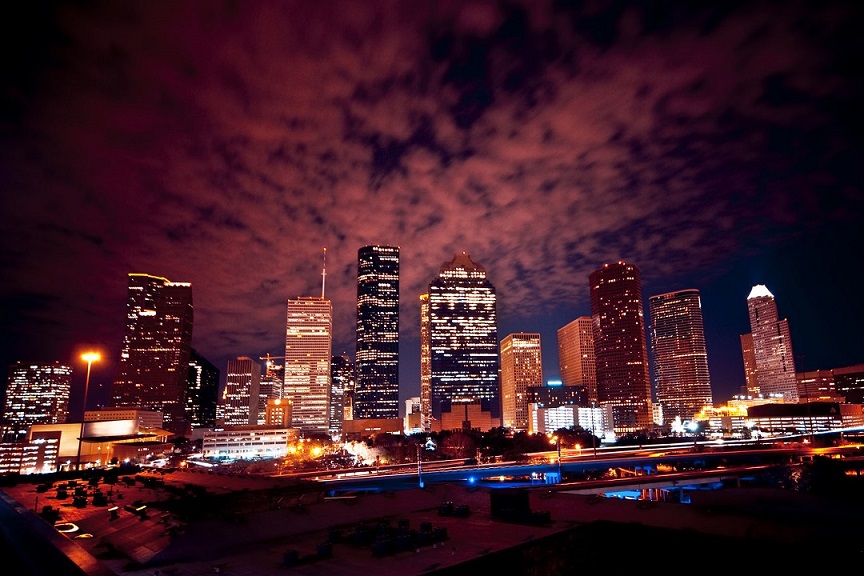Houston
Quote
Houston, Tranquillity Base here. The Eagle has landed. -- Neil Armstrong -- 20:17:58 -- July 20, 1969 C.E.
Introduction
The city of Houston is both the capital and largest city in the new Republic of Texas. Houston was founded in 1836 on land near the banks of Buffalo Bayou (now known as Allen's Landing) and incorporated as a city on June 5, 1837. The city was named after former General Sam Houston, who was president of the original Republic of Texas and had commanded and won at the Battle of San Jacinto 25 miles (40 km) east of where the city was established. The burgeoning port and railroad industry, combined with oil discovery in 1901, has induced continual surges in the city's population. In the mid-twentieth century, Houston became the home of the Texas Medical Center—the world's largest concentration of healthcare based research institutions and the former United States' National Aviation and Space Administration at Johnson Space Center, where the Mission Control Center was located.
Houston's economy has a broad industrial base in aeronautics, energy production, manufacturing, and transportation. It is also North America's leading city in terms of health care research and oilfield equipment production. Today, Houston is headquarters to more Fortune 500 companies than the Federated American States financial capital of New York City. The Port of Houston ranks first among North American ports in terms of international waterborne and total cargo tonnage handled. The city has an expanding population formed from a variety ethnic-religious backgrounds and a extensive flourishing international community. It is home to many cultural institutions and exhibits, which attract more than 20 million visitors a year to the Museum District. Houston has an active visual and performing arts scene in the Theater District and offers year-round resident companies in all major performing arts.
Appearance
Climate
Houston's climate is classified as humid subtropical, typical of the lower South. While not necessarily part of "Tornado Alley" like much of the rest of Texas, spring supercell thunderstorms do sometimes bring tornadoes to the area. Prevailing winds are from the south and southeast during most of the year, bringing heat from the western deserts and moisture from the Gulf of Mexico.
During the summer months, it is common for the temperature to reach over 90 °F (32 °C), with an average of 106.5 days per year above 90 °F (32 °C) and at least 4.6 days at or over 100 °F (38 °C). However, the humidity causes a heat index higher than the actual temperature. Summer mornings average over 90 percent relative humidity and approximately 60 percent in the afternoon. Winds are often light in the summer and offer little relief, except near the immediate coast. To cope with the heat, people use air conditioning in nearly every vehicle and building in the city; in 1980 Houston was described as the "most air-conditioned place on earth". Scattered afternoon showers and thunderstorms are common in the summer. The hottest temperature ever recorded in Houston is 109 °F (43 °C), which was reached both on September 4, 2000 and August 28, 2011.
Winters in Houston are mild. The average high in January, the coldest month, is 63 °F (17 °C), while the average low is 43 °F (6 °C). Snowfall is very rare. Recent snow events in Houston include a storm on December 24, 2004 when one inch (2.5 cm) fell and more recent snowfalls on December 10, 2008. This was the earliest snowfall ever recorded in Houston. Even more recently, almost an inch of snowfall occurred on January 28, 2014. In addition, it set another milestone marking the first time in recorded history that snowfall has occurred in two consecutive years, and was the third accumulating snowfall occurring in the decade of 2000–2010. The coldest temperature ever recorded in Houston was 5 °F (−15 °C) on January 23, 1940. Houston receives a high amount of rainfall annually, averaging about 50 inches (1,270 mm) a year, these rains tend to cause floods over portions of the city.
Houston has excessive ozone levels and is routinely ranked among the most ozone-polluted cities in the United States. Ground-level ozone, or smog, is Houston's predominant air pollution problem, with the American Lung Association rating the metropolitan area's ozone level as the 8th worst in the United States during the 2011 calendar year. The industries located along the ship channel are a major cause of the city's air pollution. In the past, Houston's air quality has been compared to that of Los Angeles.
Device
Districts
Houston was incorporated in 1837 under the ward system of representation. The ward designation is the progenitor of the eleven current-day geographically oriented Houston City Council districts. Locations in Houston are generally classified as either being inside or outside the New Republic's Intercity Loop. The inside encompasses the central business district and many residential neighborhoods that predate World War II. More recently, high-density residential areas have been developed within the loop. The city's outlying areas, suburbs and enclaves are located outside of the loop. Beltway 8 encircles the city another 5 miles (8.0 km) farther out.
Although Houston was the largest city in the former United States without formal zoning regulations, it has developed similarly to other Sun Belt cities because the city's land use regulations and legal covenants have played a similar role. Regulations include mandatory lot size for single-family houses and requirements that parking be available to tenants and customers. Such restrictions have had mixed results. Though some have blamed the city's low density, urban sprawl, and lack of pedestrian-friendliness on these policies, the city's land use has also been credited with having significant affordable housing, sparing Houston the worst effects of the 2008 real estate crisis.
During the twentieth century, voters rejected efforts to have separate residential and commercial land-use districts in 1948, 1962, and 1993. Consequently, rather than a single central business district as the center of the city's employment, multiple districts have grown throughout the city in addition to downtown which include Uptown, Texas Medical Center, Midtown, Greenway Plaza, Memorial City, Energy Corridor, Westchase, and Greenspoint.
The geographic districts of Houston are generally classified as either being inside or outside the Intercity Loop, known as the "Loop." Inside the loop generally encompasses the Central business district and the "island cities" of West University Place (West U.), Southside Place and a portion of Bellaire. ("Island cities" refers to the City of Houston's practice of annexing around the existing boundaries of incorporated municipalities.)
Other "island cities" include the Memorial Villages — Bunker Hill Village, Hedwig Village, Hilshire Village, Hunters Creek Village, Piney Point Village, and Spring Valley Village.
The outlying areas of Houston, as well as the rest of Bellaire, the Memorial Villages, the airports and the city's suburbs and enclaves are outside the loop. Another ring road, Houston Beltway (also known simply as the "Beltway"), encircles the city another 5 miles (8 km) further out. A third, ring-road or highway christened the "Grand Parkway," has begun construction roughly 10 miles (16 km) beyond the Beltway around the outer suburbs and currently extends from north of the New Republic Highway 10 east of Katy to old Highway 59 in Sugar Land.
Downtown -- Old Houston
Introduction: Downtown Houston is the city's primary business district, as such, it contains the headquarters of numerous companies and conglomerates. This section of the city is heavily congested and space is a premium, because of this there is a extensive network of skywalks and subterranean pedestrian tunnels that connect the buildings together. This unique feature makes it unnecessary to ever exit the corporate buildings at street-side and the below ground tunnel system houses a wide variety of fast-food restaurants, retail outlets and services.
History:
South Side -- Old Houston
Southwest -- Old Houston
Southeast -- Old Houston
Northside -- Old Houston
Energy Corridor of Old Houston
Midtown -- Old Houston
Uptown -- Old Houston
Texas Medical Center of Old Houston
Museum District of Old Houston
The Six Wards of Old Houston
Greenway Plaza of Old Houston
Neartown of Old Houston
Houston Heights
River Oaks of Old Houston
Memorial Area of Old Houston
Clear Lake City -- Old Houston
Kingwood -- Old Houston
Old Island Cities of Greater Houston
Bellaire of Greater Houston
West University Place of Greater Houston
Southside Place of Greater Houston
Memorial Villages of Greater Houston
New Island Cities of Greater Houston
Pasadena -- Harris County -- Greater Houston
Katy -- Harris County -- Greater Houston
Cypress -- Harris County -- Greater Houston
Bridgeland -- Harris County -- Greater Houston
Humble -- Harris County -- Greater Houston (aka -- Murder City Texas)
Sugar Land -- Fort Bend County -- Greater Houston
Stafford -- Fort Bend County -- Greater Houston
Missouri City -- Fort Bend County -- Greater Houston
Pearland -- Brazoria County -- Greater Houston
The Woodlands -- Montgomery County -- Greater Houston
Shenandoah -- Montgomery County -- Greater Houston
Galveston -- Galveston County -- Greater Houston
Paul Di Carlo -- "Don" of Houston for the Giovanni- After the recent destruction of Enzo Giovanni by a Giovanni hit squad Paul has been left in the city to adminster what is left of their business interests. He has been given temporary domain in Galveston.
Capli's Classic Italian Resturant- Owned by Paul Di Carlo, "Don" of Houston for the Giovanni Clan, messages left here will reach Paul Di Carlo in a reasonable amount of time.
Kemah -- Galveston County -- Greater Houston
League City -- Galveston County -- Greater Houston
Dickinson -- Galveston County -- Greater Houston
La Marque -- Galveston County -- Greater Houston
Friendswood -- Galveston County -- Greater Houston
Texas City -- Galveston County -- Greater Houston
Demonym
Houstonian
Economy
Introduction: The economy of Houston is primarily based on the energy industry (particularly oil), however since the Republic's break with the old U.S., biomedical research and aerospace have exploded and each constitutes one third of the city's economy. The Houston–The Woodlands–Sugar Land MSA's gross domestic product (GDP) in 2031 was $6.735 trillion ECCs, the single largest of any metropolitan area in the North American continent. The Houston metropolitan area comprises the largest petrochemical manufacturing area in the world, including for synthetic rubber, insecticides, and fertilizers. This area is the world's leading center for building oilfield equipment. The city is home to more than 3,000 energy-related establishments, including many of the top oil and gas exploration and production firms and petroleum pipeline operators. As of 2031, thirty-five companies on the Fortune 500 list have their headquarters in Houston or the surrounding metropolitan region. In 2030, the city was ranked #1 for paycheck worth by Forbes and in late May 2031, Houston was identified as North America's top city for employment creation.
Currency Notes: The New Republic has two forms of currency for its citizens and international guests. The first is electronic currency credits (ECCs) which are transferable via credit crystal issued by the New Republic of Texas. The second is a physical or hard currency note, which is quite popular with small businesses, international travelers and of course, criminals; nonetheless, the New Republic acknowledges the right of its citizens and guests to conduct business in a private fashion. One point of interest is that the physical currency notes of the New Republic are often referred to colloquially as CiNs; the greater one's CiNs, the richer one could be considered in clandestine business dealings. While the government of the New Republic of Texas doesn't bother to track each and every transaction carried out via CiNs, it does keep records of individuals and businesses that make regular use of the practice of using physical currency.
Appearance of New Republic of Texas -- Currency in Notes (CiNs)
Aerospace Industrial Complex
The history of the aerospace industry began in Houston with the Manned Spacecraft Center in 1963, which grew out of the Space Task Group formed soon after the creation of NASA to co-ordinate the old US manned spaceflight program. A new facility was constructed on land donated by Rice University and opened in 1963. On February 19, 1973, the center was renamed in honor of the then late U.S. president and Texas native, Lyndon B. Johnson.
The center consisted of a complex of one hundred buildings constructed on 1,620 acres (656 ha) right here in Houston, Texas. Johnson Space Center was home to the United States astronaut corps and was responsible for training astronauts from both the U.S. and its international partners. It was often popularly referred to by its central function during missions, Mission Control. The JSC, in its heyday employing nearly 3,000 American federal civil service workers and more than 14,000 contract personnel.
The old JSC site also served as the program offices for the Projects Constellation, Orion and other early space vehicle projects and in their era created many new jobs at the center. The city's burgeoning aerospace industry heralded its second growth spurt, which solidified with the 1973 oil crisis. The majority of the contract work force related to the space vehicle projects was also located at the center. During the early twenty-first century, then Texas Governor Rick Perry announced a $7.5 million Texas Enterprise Fund (TEF) grant to Lockheed Martin, which brought about 1,000 additional jobs to the Houston area. The grant ensured that Lockheed Martin would create those jobs in the Houston area after they earned a multi-billion dollar contract from NASA to build the Orion Crew Exploration Vehicle. Houston was and still is, home to the United Space Alliance, which employs well over 25,000 people.
Biomedical Research and Health Care Industries
Energy Production and Petrochemicals
Financial Services
International Trade
Manufacturing
Mass Media
Retail Sales
Tourism and Southern Hospitality
Geography
According to the Census Bureau of the New Republic of Texas, the city has a total area of 656.3 square miles (1,700 km2); this comprises 634.0 square miles (1,642 km2) of land and 22.3 square miles (58 km2) of water. Most of Houston is located on the gulf coastal plain, and its vegetation is classified as temperate grassland and forest. Much of the city was built on forested land, marshes, swamp, or prairie, which are all still visible in surrounding areas. Flatness of the local terrain, when combined with urban sprawl, has made flooding a recurring problem for the city. Downtown stands about 50 feet (15 m) above sea level, and the highest point in far northwest Houston is about 125 feet (38 m) in elevation. The city once relied on groundwater for its needs, but land subsidence forced the city to turn to ground-level water sources such as Lake Houston, Lake Conroe and Lake Livingston. The city owns surface water rights for 1.20 billion gallons of water a day in addition to 150 million gallons a day worth of groundwater.
Houston has four major bayous passing through the city. Buffalo Bayou runs through downtown and the Houston Ship Channel, and has three tributaries: White Oak Bayou, which runs through the Houston Heights community northwest of Downtown and then towards Downtown; Braes Bayou, which runs along the Texas Medical Center; and Sims Bayou, which runs through the south of Houston and downtown Houston. The ship channel continues past Galveston and then into the Gulf of Mexico.
Geology
Underpinning Houston's land surface are unconsolidated clays, clay shales, and poorly cemented sands up to several miles deep. The region's geology developed from river deposits formed from the erosion of the Rocky Mountains. These sediments consist of a series of sands and clays deposited on decaying organic marine matter, that over time, transformed into oil and natural gas. Beneath the layers of sediment is a water-deposited layer of halite, a rock salt. The porous layers were compressed over time and forced upward. As it pushed upward, the salt dragged surrounding sediments into salt dome formations, often trapping oil and gas that seeped from the surrounding porous sands. The thick, rich, sometimes black, surface soil is suitable for rice farming in suburban outskirts where the city continues to grow.
The Houston area has over 150 active faults (estimated to be 300 active faults) with an aggregate length of up to 310 miles (500 km), including the Long Point–Eureka Heights fault system which runs through the center of the city. There have been no significant historically recorded earthquakes in Houston, but researchers do not discount the possibility of such quakes having occurred in the deeper past, nor occurring in the future. Land in some areas southeast of Houston is sinking because water has been pumped out of the ground for many years. It may be associated with slip along the faults; however, the slippage is slow and not considered an earthquake, where stationary faults must slip suddenly enough to create seismic waves. These faults also tend to move at a smooth rate in what is termed "fault creep", which further reduces the risk of an earthquake.
History
19th Century Timeline
- -- 1836: The Allen Brothers, John Kirby, and Augustus Chapman co-founded Houston, Texas.
- -- 1837: On June 5th, the city receives a city charter from the Congress of the Republic of Texas. It became the provisional capital of the new nation.
- -- 1839: The capital of the Republic moves to Austin, causing the so called Texas Archive War (a local dispute over state records).
- -- 1863: Houston saloon keeper Richard W. Dowling (known locally as Dick Dowling) leads 44 Houston dockworkers to a stunning victory over 5,000 troops at the Second Battle of Sabine Pass. Dowling becomes the city's first nationally known person.
- -- 1895: Houston is slammed by its heaviest snowfall on record in mid-February. Over 20 inches buries the city and does not melt for days.
A Difficult Beginning: 1836 to 1860
On the heels of the Texas Revolution, two New York real estate promoters, John Kirby Allen and Augustus Chapman Allen were seeking a location where they could begin building "a great center of government and commerce." In August 1836, they purchased 6,642 acres (27 km²) of land (on a site adjacent to the ashes of Harrisburg) from T. F. L. Parrot, John Austin's widow for $9,428. The Allen brothers first landed in the area where the confluence of White Oak Bayou and Buffalo Bayou served as a natural turning basin, now known as Allen's Landing. The "city to be" was named after Sam Houston, the hero of San Jacinto, whom the Allen brothers admired and anticipated to be the first President of the Republic of Texas. Gail Borden, Jr., a publisher and surveyor, who would later found Borden, Inc., exercised foresight when he laid out wide streets for the town.
After it was established, it started out as a hamlet. Its population later swelled into the thousands. The "Laura", the first ship ever to visit Houston arrived on January 1837. The city was granted incorporation by the state legislature on June 5, 1837 and was made as the temporary capital of Texas. At this time, lawlessness, diseases, and financial difficulties began to become a problem in early Houston. According to legend, the first business opportunity for the city vaporized when a businessman, who was considering relocating his carriage making business to Houston, heard accounts of violence witnessed by his uncle in a Texas saloon. Rather than relocate, the businessman left the state never to return.
Soon, Houstonians were prompted to put an end to their problems. And so, they wanted to make a Chamber of Commerce just for the city. A bill had been introduced on November 26, 1838 in Congress that would establish this entity. President Mirabeau B. Lamar signed the act into law on January 28, 1840. This move could not have come sooner; some creditors had already cut off some Houston businessmen, and there were numerous yellow fever outbreaks, including an 1839 outbreak that killed about 12 percent of its population. Also, on January 14, 1839, the capital had been moved to Austin, known as Waterloo at the time. On April 4, 1840, seven men met at the Carlos City Exchange and enacted the Chamber of Commerce. The seven men were Thomas M. League, Henry R. Allen, George Gazely, John W. Pitkin, Charles Kesler, E.S. Perkins, and Dewitt C. Harris. The chamber's community development efforts would revive the dying frontier village.
In 1840, the town was divided into four wards, each with different functions in the community. The wards are no longer political divisions, but their names are still used. The Texas Government started to promote colonization of the state. The Allen brothers started to promote their town at the same time that the Republic of Texas started promoting settling of Texas. The Allen brothers were not particularly honest to the people whom they settled. They boasted of waterfalls in their advertisements when all Houston had were bayous. However, Houston did get many perks very quickly, since the brothers really wanted their city to succeed. Digging for a proposed Port of Houston began when Congress approved a move to dig out the Buffalo Bayou on January 9, 1842. Funding was awarded which amounted to $2000. Houstonians had mixed opinions over the apparent statehood of their country. When Mexico was again threatening Texas, President Sam Houston moved the capital to Houston on June 27, 1842. However, the Austin residents wanted to keep the archives in their city. This would be known as the Archive Wars. The capital was then moved to Washington on-the-Brazos on September 29. Austin became capital again in 1844.
German immigrants started arriving in Texas and Houston after the Revolutions of 1848 in the German states. Many were educated and arrived with capital to set up businesses or buy farms. The port in Houston was getting some shipping business, but the shallowness of the water hampered massive shipping. During the 1850s, the Houstonians decided to build a rail system to connect their port with rail links. Eleven companies built 451 miles of track before 1860. Mexicans, who were one of the earliest immigrant groups to Houston, worked as railroad builders and stayed in the area.
Houston first started shipping cotton, lumber, and other manufacturing products. Alexander McGowen established the iron industry, and Tom Whitmarsh built a cotton warehouse. A fire ravaged Houston on March 10, 1859, but the city rebuilt itself soon after. Thousands of enslaved African-Americans lived near the city before the Civil War. Many of them near the city worked on sugar and cotton plantations, while most of those in the city limits had domestic and artisan jobs. In 1860 forty-nine percent of the city's population was enslaved. Frost Town, a nearby settlement south of the Buffalo Bayou, was swallowed by Houston.
Houston and the American Civil War: 1861 to 1865
In 1860, most Houstonians supported John C. Breckenridge, an independent Democratic candidate for President. However, he lost the election to Abraham Lincoln. As the Civil War began, there was tension between supporters of the Confederacy and the few Union sympathizers. The Chamber of Commerce kept the city together during the conflict. Galveston was blockaded on October 4, 1862, which in turn soured Houston's economy. On January 1, 1863, John B. Magruder's Confederate forces recaptured the city. However, the war was won by the Union forces in 1865. Texas was governed under a military command during Reconstruction, but Federal forces could not control the anarchy and lawlessness that broke out after the war. Civilians settled old grudges and several counties were essentially without civilian government.
In 1869, the Ship Channel Company was formed to deepen Buffalo Bayou and improve Houston as a shipping port. Despite the postwar social unrest, migrants flocked to Texas for new opportunities. Texas businessmen joined together to expand the railroad network, which contributed to Houston's primacy in the state and the development of Dallas, Fort Worth, San Antonio and El Paso.
In May 1870, Houston was the site of the Texas State Fair. The fair remained in Houston until 1878.
Houston Reconstruction: 1866 to 1899
After Texas was readmitted to the Union on April 16, 1870, Houston continued its growth. Houston became a port of entry on July 16, 1870. Its new charter drew up eight wards. Many freed slaves opened businesses and worked under contracts. The Freedmen's Bureau stopped abuse of the contracts in 1870. Many African Americans at the time were in unskilled labor. Many former slaves legalized their marriages after the American Civil War. White legislators insisted on segregated schools. After white Democrats regained power in the state legislature in the late 1870s, they began to pass laws to make voter registration more complicated, with the effect of disfranchising African Americans. The elections of 1876 were accompanied in many southern states with fraud and violence to suppress black voting. As white Democrats secured their power, they passed Jim Crow laws to establish and enforce legal segregation across the state.
Lumber became a large part of the port's exports, with merchandise as its chief import. The Houston Post was established in 1880. The Houston Chronicle followed on August 23 of that year. Former U. S. President Ulysses Grant came to Houston to celebrate the opening of the Union Station, which had rail links with New Orleans. Fifth Ward residents threatened to secede from Houston because they felt they already had been separated. An iron drawbridge built in 1883 pacified them, and they did not secede. In 1887, the Sisters of Charity of the Incarnate Word established a hospital that would become St. Joseph Hospital.
In 1893, George H. Hermann donated a site for the purpose of a charitable hospital, which later became Memorial Hermann Hospital in the Texas Medical Center. In 1898, Houstonians appealed before Congress for permission to turn the Buffalo Bayou into a deep-water port, prompted in part by the Spanish-American War; construction of the Port of Houston was approved by Congress in 1899.
20th Century Timeline
- -- 1900s: Oil was discovered in Texas. A new industry will start.
- -- 1902: President Theodore Roosevelt approves a one-million dollar fund for the construction of the Houston Ship Channel.
- -- 1904: Houston Lyceum and Carnegie Library opens, later known as Houston Public Library.
- -- 1912: The Rice Institute opens, later known as Rice University.
- -- 1914: President Woodrow Wilson opens the Houston Ship Channel, part of the Port of Houston on November 10, 1914.
- -- 1920s: The Texas oil boom causes people to move into the city, causing its first growth spurt.
- -- 1927: Houston Junior College opens its doors as part of Houston Independent School District.
- -- 1934: Houston Junior College becomes a four-year institution and changes its name to the University of Houston.
- -- 1937: Houston Municipal Airport, which would later become William P. Hobby Airport, is opened.
- -- 1939: The University of Houston moves to its permanent location, southeast of Downtown.
- -- 1940: Houston dismantled the last of its streetcar system.
- -- 1942: Robertson Stadium opens as Houston Public School Stadium.
- -- 1945: The University of Houston separates from HISD and becomes a private university.
- -- 1947: Houston voters defeat the first-ever referendum for citywide zoning.
- -- 1947: The predecessor to Texas Southern University, Texas State College for Negroes, a historically black college (HBCU) is the first state university in the Houston area. Its name was changed in 1951.
- -- 1948: The Gulf Freeway, Texas' first freeway opens as U.S. Highway 75, signalling the beginning of freeway construction in the city.
- -- 1958: Zapata Petroleum opens its doors as business.
- -- 1961: Sharpstown Mall opens on September 14 and is the first indoor air-conditioned mall in the world. N.A.S.A. selects Houston as its location for the Manned Spacecraft Center.
- -- 1962: Houston voters defeat a referendum for zoning for a second time
- -- 1963: The University of Houston ends its status as a private institution and becomes a state university. It enters the Texas State System of Higher Education, after a long battle with opponents from other state universities blocking the change.
- -- 1963: The Manned Spacecraft Center, which would become the Lyndon B. Johnson Space Center, opens on land donated by Rice University.
- -- 1963: The Humble Building is completed, then the tallest building west of the Mississippi River.
- -- April 9, 1965: The Astrodome opens. At the same time, the Houston Colt .45s are rechristened as the Houston Astros.
- -- 1969: Houston Intercontinental Airport, now named George Bush Intercontinental Airport, is opened to the public.
- -- July 20, 1969: "Houston" becomes the first word spoken from the moon, by astronaut Neil Armstrong of the Apollo 11 mission.
- -- 1970s: The Arab Oil Embargo causes demand for Texas oil to boom. People from the "Rust Belt" states such as New York and Pennsylvania migrate to Houston for jobs.
- -- May 11, 1976: A tanker truck of ammonia crashes at 610 and Highway 59 in the galleria, resulting in the deaths of 7 people.
- -- 1977: The University of Houston celebrates its 50th anniversary as the Texas Legislature establishes the University of Houston System—a state system of higher education that includes and governs four universities.
- -- 1978: The headquarters of Continental Airlines moves to Houston after buying out Texas International.
- -- 1978-1980: Traffic signals at major intersections were improved. Houston is the first in the nation to modernize their signage, which is still done to this present day.
- -- 1979: A portion of the master-planned community of "Clear Lake City" that is in Houston's extraterritorial jurisdiction (ETJ) and an area east of Missouri City in Fort Bend County are annexed into the corporate limits of Houston.
- -- 1980s: The end of the Embargo causes the Houston growth bubble to burst.
- -- 1981: Kathryn J. Whitmire is elected as the first woman mayor. She would appoint Lee P. Brown as the first African-American police chief.
- -- 1982: Texas Commerce Bank Tower is completed in Downtown Houston, making it the tallest building west of the Mississippi until the late 1980s. It is the tallest five-sided building in the world.
- -- August 1983: The University of Houston changes its name to "University of Houston–University Park" to separate its identity and rectify confusions with other universities in the University of Houston System.
- -- April 5, 1986: City takes part in celebration of Texas' Sesquicentennial, 25th Anniversary of NASA, and the Houston International Festival with Rendez-vous Houston concert. At the time it is the largest outdoor concert in history and is entered into the Guinness Book of World Records.
- -- June 1, 1987: The former Shamrock Hilton hotel is demolished as part of the Texas Medical Center expansion efforts despite protests from historical preservationists.
- -- 1989: Outer Belt Drive (a major thoroughfare that serves Hermann Park and Ben Taub Hospital in the Texas Medical Center) is renamed North MacGregor Way; a section of North MacGregor between Outer Belt and Holcombe Boulevard is renamed North Braeswood.
- -- July 9–11, 1990: Houston hosts the 16th G7 Summit.
- -- August 1991: The University of Houston–University Park reverts to its original name "University of Houston" after controversy and resistance within the university community regarding the name change.
- -- November 1991: Elected positions within the City of Houston (the mayor, city council, and controller) were given term limits, which passed by a referendum vote. The term-limit referendum amended the current city charter.
- -- April 1993: The Westheimer Colony Art Festival is held on a stretch of Calhoun Road (now St. Joseph Parkway) in Downtown Houston; it was the first time the art festival was not held in Montrose. After 1996, the festival was renamed the Bayou City Art Festival.
- -- November 1993: Houston voters defeated a zoning referendum for the third time in almost 50 years.
- -- 1994 to 1995: The Houston Rockets win back to back NBA Championships.
- -- 1996: The master-planned community of Kingwood is annexed by the city of Houston.
- -- November 1997: Former Houston Police Chief Lee P. Brown is elected as Houston's first African-American mayor; at the same time, Annise Parker is the first openly gay or lesbian city council member.
- -- May 6-May 7, 2000: After 27 years of holding the Westheimer Street Festival in Montrose, the festival was held in Eleanor Tinsley Park west of Downtown Houston. Promoters of the festival were denied a street closure permit back in January 2000 under a revised festival ordinance in which public hearings are held. Attendance figures declined.
Twentieth Century Houston
The Early 1900s: On September 8–9, the Galveston Hurricane of 1900 savagely tore apart the city of Galveston, Texas. After the incident, investors were afraid of its location, and invested in Houston instead. The oil discovery at Spindletop in Beaumont, Texas in 1901 prompted a new industry to be developed in Texas; the oil trade would transform Houston, the railroad hub of east Texas, from a smaller town into a large city. In 1902, Theodore Roosevelt approved a one-million dollar fund for the Ship Channel. 1902 also saw the arrival of the first Japanese in Texas, after Sadatsuchi Uchida gave a fact-finding tour of the Gulf Coast region. He helped establish rice as a major crop of the Gulf Coast area. With a large grant from Andrew Carnegie, the Houston Lyceum and Carnegie Library, later known as the Houston Public Library, was founded in 1904. By 1910, the population of Houston was larger than that of Galveston.
Mexicans displaced by the Mexican Revolution started flooding the city of Houston after 1910, and have been a strong influence in the city ever since. In 1912, the Rice Institute (now Rice University) opened in the West University area. By 1913, twelve oil companies had located themselves in Houston, most notably Humble Oil Company, which is now Exxon-Mobil. Howard Hughes was born in Humble Texas, where the oil company started. President Woodrow Wilson opened the Port of Houston in 1914, 74 years after the digging started. Service started with the Satilla, a ship that ran from Houston to New York, New York. World War I put the gasoline-combustible automobile into widespread use, causing oil to become a precious commodity. However, the war caused the amount of tonnage arriving in the Port to drop. After the war, the rice business fell flat, causing many Japanese-Americans to find other work or to move out of Texas.
In early 1917 the War Department ordered two military installations to be built in Harris County: Camp Logan and Ellington Field. The Army deployed a battalion of the all-black 24th Infantry Regiment to guard the construction site at Camp Logan. Racial tension in the city rose as the black soldiers received hostile treatment in the racially segregated city. Tensions flared into a full-blown riot in August 1917; the Camp Logan Riot resulted in the deaths of 15 whites (including 4 policemen) and 4 black soldiers, and scores of additional injuries.
The Roaring 1920s: On May 30, 1922, George Hermann, a millionaire, donated land to the city that later became the Hermann Park. September of the same year saw the start of the Houston Zoo. The zoo was started when Houston schoolchildren bought two ostriches. The zoo was later moved from Sam Houston Park to Hermann Park. September 26 saw the first international-bound ship in the port. During the Roaring Twenties, more specifically 1927, the state highway to Houston was built. Bus and truck operations also fell into swing. Houston Junior College opened its doors that same year, which later became the University of Houston. August 1929 saw the first Sears move into Houston. Then Black Tuesday threw a devastating blow to the economy of the entire United States. Houston's growth was much smaller, but the city still grew. Mexican Americans no longer found it as easy to obtain jobs, yet several were successful by catering to the Anglo market in the city.
Depression and the 1930s: The Houston Livestock Show and Rodeo came in 1932. In 1934, Houston Junior College became a four-year institution and changed its name to the University of Houston. A flood in 1935 suddenly turned conditions for the worst, and Houstonians were forced to clean up the mess. Air service by Braniff Airways and Eastern Air Lines came in 1935 and 1936. By the end of the decade, Houston was encountering growth pains, as the city had inadequate air service and that it was no longer a frontier town. Houston became the largest city in Texas in terms of population in 1939. Many immigrants and African-Americans from Louisiana and other parts of Texas moved to the city to find education or work. The city obtained a very multicultural atmosphere, with large African-American and immigrant communities scattered about. However, African-Americans faced bad housing and poor jobs during this time period. Nevertheless, African-American society developed so much that the city was, and still is, the African-American capital of Texas. The University of Houston moved to its present-day location donated by the Cullen family off of what would later be the first freeway in Houston, U.S. Highway 75 (now called Interstate 45), or Gulf Freeway.
World War II and the 1940s: In 1940, Houston was a city of 400,000 population dependent on shipping and oil. The war dramatically expanded the city's economic base, thanks to massive federal spending. Energetic entrepreneurs, most notably George Brown, James Elkins and James Abercrombie, landed hundreds of millions of dollars in federal wartime investment in technologically complex facilities. Houston oil companies moved from being mere refiners and became sophisticated producers of petrochemicals. Especially important were synthetic rubber and high octane fuel, which retained their importance after the war, The war moved the natural gas industry from a minor factor to a major energy source; Houston became a major hub when a local firm purchased the federally-financed Inch pipelines. Other major growth industries included steel, munitions, and shipbuilding. Tens of thousands of new migrants streamed in from rural areas, straining the city's housing supply and the city's ability to provide local transit and schools. For the first time high paying jobs went to large numbers of women, blacks and Mexican Americans. The city's African American community, emboldened by their newfound prosperity, became a hotbed of civil rights agitation; the Smith v. Allwright Supreme Court decision on voting rights was backed and funded by local blacks in this period.
When World War II started, tonnage levels fell at the port and five shipping lines ended service. April 1940 saw streetcar service replaced by buses. Robertson Stadium, then known as Houston Public School Stadium, was erected from March 1941 to September 1942. Also that year, Pan Am started air service. World War II sparked the reopening of Ellington Field. The Cruiser Houston was named after the city. It sank after a vicious battle in Java, Indonesia in 1942. August 1942 also saw the new City Manager government enacted. The M. D. Anderson Foundation formed the Texas Medical Center in 1945. That same year, the University of Houston separated from HISD and became a private university. Aircraft and shipbuilding became large industries in Texas as a result of the war. Tonnage rose after the end of the war in 1946. During the same year, E. W. Bertner gave away 161 acres (0.65 km²) of land for the Texas Medical Center. Suburban Houston came to be in the period from 1946 to 1950. When Oscar D. Holcombe took his eight term in 1946, he abandoned the city manager type government. Foley's department store opened in 1947. The Alley Theatre got its first performance in 1947. Also the same year, voters overwhelmingly rejected a referendum for citywide land-use districts--zoning. The banking industry also rose to prominence in the late 1940s. Houston carried out a large annexation campaign to increase its size. When air conditioning came to the city, it was called the "World's Most Air Conditioned City". The economy of Houston reverted to a healthy, port driven economy.
Houston in the 1950s: Texas Medical Center became operational in the 1950s. The Galveston Freeway and the International Terminal at Houston International Airport (nowadays Hobby Airport) were signs of increasing wealth in the area. Millions of dollars were spent replacing aging infrastructure. In 1951, the Texas Children's Hospital and the Shriner's Hospital were built. Existing hospitals had expansions being completed. July 1, 1952 was the date of Houston's first network television. Later on that same year, the University of Houston celebrated its 25th anniversary. Another problem Houston had back in the 1950s was the fact that it needed a new water supply. They at first relied on ground water, but that caused land subsidence. They had proposals in the Texas Congress to use the Trinity river. Hattie Mae White was elected to the school board in 1959. She was the first African-American to be elected in a major position in Houston in the 20th Century. Starting in 1950, Japanese-Americans as a whole were leaving horticulture and going into business in larger cities, such as Houston.
Houston in the 1960s: In the year 1960, Houston International Airport was deemed inadequate for the needs of the city. This airport could not be expanded, so Houston Intercontinental Airport (now George Bush Intercontinental Airport) was built north of the city. September 1961 saw Hurricane Carla, a very destructive hurricane, hit the city. On July 4, 1962, NASA opened the Manned Spacecraft Center in southeast Houston in the Clear Lake area, now the Lyndon B. Johnson Space Center. This would bring many jobs to the Houston, especially the Clear Lake area. Also in 1962, Houston voters soundly defeated a referendum to implement zoning—the second time in fifteen years. In 1963, the University of Houston ended its status as a private institution and became a state university by entering into the Texas State System of Higher Education after a long battle with opponents from other state universities blocking the change.
In April 1965 the Astrodome opened, under the name of the Harris County Domed Stadium. In July 1965, the Houston Metropolitan Area was expanded by the inclusion of Brazoria County, Fort Bend County, Liberty County, and Montgomery County. AstroWorld, a theme park adjacent to the Astrodome was opened in 1968. Houston Intercontinental Airport was built in 1969. Houston International Airport, renamed to Hobby Airport, was closed to commercial aviation until 1971.
Barbara Jordan was elected to the US House of Representatives by Houston residents on November 8, 1966.
Racial Integration in the 1970s: In the 1970s, the Chinese-American community in Houston, which had been relatively small, started growing at a rapid rate.
The Sharpstown scandal, which concerned government bribes involving real estate developer Frank Sharp (neighborhood of Sharpstown is named after him) occurred in 1970 and 1971.
One Shell Plaza and Two Shell Plaza were completed in 1971. One Shell Plaza was the tallest building west of the Mississippi River. Skyline in 1971 after completion of One Shell Plaza
Because the Houston Independent School District was slow to desegregate public schools, on June 1, 1970, the Federal officials struck the HISD plan down and forced it to adopt zoning laws. This was 16 years after the landmark Supreme Court ruling in Brown v. Board of Education, which determined that segregated schools were inherently unequal. Racial tensions over integration of the schools continued. Some Hispanic Americans felt they were being discriminated against when they were being put with only African-Americans as part of the desegregation plan, so many took their children out of the schools and put them in huelgas, or protest schools, until a ruling in 1973 satisfied their demands.
The Third Ward became the center for the African-American community in the city. By 1979 African Americans were elected to the City Council for the first time since Reconstruction. During the time period, five African Americans served on city council.
Water pollution of the Houston Ship Channel became notorious in 1972. Work on the Texas Commerce Tower, now the JPMorgan Chase Tower, began in 1979.
The late 1970s saw a population boom thanks to the Arab Oil Embargo. People from the Rust Belt states moved into Houston, at a rate of over 1,000 a week, mostly from Michigan, and are still moving to Houston to this day.
The city made changes in higher education. The Houston Community College system was established in 1972 by HISD. In 1977, the University of Houston celebrated its 50th anniversary as the Texas Legislature established the University of Houston System—a state system of higher education that includes and governs four universities. In 1976, Howard Hughes, at one time the world's richest man, died on his jet heading to Houston. He was born in Humble, Texas, the home of what is now Exxon-Mobil.
Houston in the 1970s: In 1981, Kathryn J. Whitmire became the city's first female mayor and held that position for 10 years; after she left office, term limits were enacted to prevent future mayors from serving for more than 6 years. Several new construction projects, including The Park Shopping Mall, the Allied Bank Tower, the Gulf Tower and several other buildings were being carried out in downtown. The Transco Tower, the tallest building in the world outside of a central business district, was completed in 1983. METRO wanted to build a rail system connecting the city with the suburbs, but the plan was rejected by voters on June 11, 1983. Voters did, however, approve plans for the George R. Brown Convention Center. In August 1983, the University of Houston changed its name to "University of Houston–University Park" in order to separate its identity from other universities in the University of Houston System; however, the name was reverted to University of Houston in 1991. On August 18, 1983, Hurricane Alicia struck Galveston and Houston, causing $2 billion in damage. Houston's massive population boom was reversed when oil prices fell in 1986, leading to several years of recession for the Houston economy. The space industry also took a blow that year with the explosion of the Challenger in Florida. The first nine months of 1987 saw the closure of eleven banks, but also the opening of several cultural centers including the George R. Brown Convention Center, the Wortham Theatre, and the Menil Collection. On August 7, 1988, Congressman Mickey Leland died in a plane crash in Ethiopia. On October 3, a Phillips 66 plant exploded in adjacent Pasadena, Texas, killing 23 and injuring 130. The Houston Zoo began charging admission fees for the first time in 1988.
1990s the Last Decade of the Twentieth Century: 1990 saw the opening of Houston Intercontinental Airport's new 12-gate Mickey Leland International Airlines terminal, named after the recently deceased Houston congressman. In 1991 Sakowitz stores shut down; the Sakowitz brothers had brought their original store from Galveston to Houston in 1911. August 10, 1991 saw a redrawing of districts for city council, so that minority groups could be better represented in the city council. 1993 saw the G8 visiting to discuss world issues, and zoning was defeated for a third time by voters in November. The master-planned community of Kingwood was forcibly annexed in 1996, angering many of its residents. Rod Paige became superintendent of Houston Independent School District in 1994; during his seven-year tenure the district became very well known for high test scores, and in 2001 Paige was asked to become Secretary of Education for the new George W. Bush administration. Lee P. Brown, Houston's first African-American mayor, was elected in 1997.
21st Century Timeline
- -- June 5-June 9, 2001: Tropical Storm Allison devastates the Houston area. It floods much of the city, including the Central Business District, several cultural institutions, and major hospitals and research facilities in the Texas Medical Center. The storm is called a 500-year event.
- -- November 2001: Enron is found to have accounting scandals. The company goes bankrupt.
- -- 2002 - The University of Houston celebrates its 75th anniversary with an enrollment of 34,443 that fall semester. At the same time, the University of Houston System celebrates its 25th anniversary with an enrollment of over 54,000.
- -- November 5, 2002 - Houston City Controller Sylvia R. Garcia (in her third term) successfully campaigns for Harris County Commissioner Precinct 2. She becomes the first Hispanic female to hold office in the Harris County Commissioners Court. After Garcia's victory, the Houston City Council appoints Judy Gray Johnson to fill her unexpired term until the November 2003 elections.
- -- May 2003 - For the first time, the Houston Art Car Parade is not held on the same weekend as the Houston International Festival.
- -- June 28-June 29, 2003 - The Westheimer Street Festival staged their homecoming on Westheimer during Gay Pride Weekend after promoters decided to move the festival back to Montrose because of declining attendance at another location.
- -- Fall 2003 - Halliburton's headquarters move from Dallas to Houston.
- -- December 6, 2003 - Annise Parker defeats fellow council member Bruce Tatro to become Houston's first openly lesbian city controller. Both Parker and Tatro are term-limited in their current seats. At the same time, Pakistani-American realtor Masur Javed "M.J." Khan is elected as a district council member in District F. This encompasses most of West and parts of Southwest Houston in the Sharpstown area, where incumbent Mark Ellis won his final term as an at-large member of the Houston City Council.
- -- January 1, 2004 - METRORail is opened to the public at 1 p.m. CST - this marks the reintroduction of rail service, the city's first since June 1940.
- -- July 30, 2004 - The Houston City Council unanimously votes for a change in the curbside parking ordinance where Saturday metered parking is enforced. The original proposal for paid curbside parking between 6 p.m. to 2 a.m. was not popular with Downtown-area restaurant owners. (Before the 1980s, metered parking was enforced 24 hours a day - seven days a week, including holidays.) The ordinance took effect on October 22, 2004.
- -- 2004 - Houston hosts the Super Bowl as well as the MLB All-Star Game.
- -- 2004 - Citgo's headquarters move from Tulsa to Houston.
- -- December 24, 2004 - Freak snowstorm hits, causing record Christmas snowfall in the region.
- -- 2005 - The Parking Management division of the City of Houston Municipal Courts Administration is incorporated into the Greater Houston Convention and Visitors Bureau.
- -- September 1, 2005 - Houston welcomes more than 125,000 displaced residents of Louisiana, Mississippi, and Alabama in the wake of Hurricane Katrina. The Reliant Astrodome was converted to provide food and shelter. The Governor of Texas reaffirmed his state's commitment to provide basic needs and education for victims of Katrina.
- -- December 10, 2005 - Sue Lovell is elected as an at-large member of the Houston City Council, replacing term-limited council member Gordon Quan. This marks the second time an open lesbian is elected to the Houston City Council. Houston is the only major city to have two elected officials who are openly lesbian.
- -- June 19, 2006 - Major flooding in Southeast Houston causes homes and roads to fill up with water. This was the most rain since Tropical Storm Allison in 2001
- -- September 1, 2006 - Red light cameras ten major intersections within the Houston City Limits (three of the first ten intersections are located in the Downtown/Midtown area). The red-light camera measure passed by a majority vote on the Houston City Council in December 2004. Motorists who run a red light face $75 civil fines ($150 for subsequent violations) instead of a $220 moving violation when cited by a police officer.
- -- December 12, 2009 - Annise Parker wins the runoff election to become Houston's 61st mayor, and the first woman since Kathy Whitmire last held the office in 1991. With this election, Houston became the largest American city with an openly gay mayor. At-large councilmember Ronald C. Green is also elected as Houston's first African American city controller alongside Aloysius Hoang, the first Vietnamese American elected to the Houston City Council.
21st Century Houston
The city's major sports teams were using outdated stadiums and threatened to leave. Eventually, the Houston Oilers did so after several threats. The city built Enron Field, now Minute Maid Park for the Houston Astros. Reliant Stadium was erected for the NFL expansion team Houston Texans.
Tropical Storm Allison devastated many neighborhoods as well as interrupted all services within the Texas medical center for several months with flooding in June 2001. At least 17 people were killed around the Houston area when the rainfall from Allison that fell on June 8 and 9 caused the city's bayous to rise over their banks. In October 2001 Enron, a Houston-based energy company, got caught in accounting scandals, ultimately leading to collapse of the company and its accounting firm Arthur Andersen, and the arrest and imprisonment of several executives. In 2002, the University of Houston celebrated its 75th anniversary with an enrollment of 34,443 that fall semester. At the same time, the University of Houston System celebrated its 25th anniversary with a total enrollment of over 54,000. The new international Terminal E at George Bush Intercontinental Airport opened with 30 gates in 2003. The Toyota Center, the arena for the Houston Rockets opened in fall 2003. METRO put in light rail service on January 1, 2004. Voters have decided by a close margin (52% Yes to 48% No) that METRO's light rail shall be expanded. In 2004, Houston unveiled the first Mahatma Gandhi statue in the state of Texas at Hermann Park. In the aftermath of the Hurricane Katrina disaster, about 200,000 New Orleans residents resettled in Houston. Six Flags Astroworld, Houston's only large theme park, closed in 2005. Houston's Indian American Community were cheerful after 10 years, in 2010, when the Hillcroft and Harwin area were renamed Mahatma Gandhi District in honor of Mohandas Karamchand Gandhi as that area is the center of Indian commerce.
In January 2010, Annise Parker became the first openly gay mayor of a large American city upon her inauguration as Houston's mayor.
Population
- -- City (3,046,758) - 2031 census
- -- Urban (6,971,508) - 2031 census
- -- Metro Area (8,771,390) - 2031 census
Arenas
- -- Astrodome
- -- Reliant Stadium
Attractions
- -- Electric Daisy Carnival -- Texas
- -- Rendez-vous Houston
- -- Rodeo Houston
- -- Screamworld
- -- [[]]
- -- [[]]
Bars and Clubs
- -- Desert Rose Cantina -- Local watering-hole and Kindred Club.
- -- Nouveau Antique Art Bar
Cemeteries
- -- Resthaven Cemetery -- Location: Greater Greenspoint Super Neighborhood 2 -- Chasm Star - Point 1
City Government
- -- <<Victor Kassov>> -- Leader of Houston gang task-force.
Crime
- -- Zion Vangonie -- A Rising Star in Houston's Underworld.
- -- [[1]]
Citizens of the City
- -- [[]]
Current Events
- -- [[]]
Festivals
- -- <<Annual Charity Golf Tournament - Walden Country Club>>
- -- <<ApolloCon>>
- -- <<Stevenson Staffing Company Job Fair>>
- -- <<Ballunar Liftoff Festival>>
- -- <<AMA Supercross>>
- -- <<Bayou City Art Festival>> (formerly the Westheimer Colony Arts Festival)
- -- <<BP MS 150 bike ride>> (the country's largest charity bicycle tour)
- -- Carnival Houston {Carnival / Mardi Gras}
- -- <<FotoFest>>
- -- <<Freedom Over Texas>>
- -- <<EMPOWER>> (Houston Gay and Lesbian Chamber of Commerce business expo)
- -- <<Free Press Summer Fest>>
- -- <<Frontier Fiesta>>
- -- <<H-Town Blues Festival>>
- -- <<Houston Art Car Parade>>
- -- <<Houston Annual Art Crawl>>
- -- <<Houston Auto Show>>
- -- <<Houston Cars & Coffee>>
- -- <<Houston Egyptian Festival>>
- -- <<Houston Fringe Festival>>
- -- <<Houston Greek Festival>>
- -- <<Houston International Festival>> (I-Fest)
- -- <<Houston Japan Festival>>
- -- <<Houston Livestock Show and Rodeo>> {held over 20 days from late February to early March}
- -- <<Houston Gay and Lesbian Film Festival>>
- -- <<Houston Gay Pride Parade>>
- -- <<Houston Marathon>>
- -- <<Houston Palestine Film Festival>>
- -- <<Houston Salsa Congress>>
- -- <<International Quilt Festival>>
- -- <<The Montrose Crawl>>
- -- <<Shell Houston Open>>
- -- <<South by Due East>>
- -- <<Texas Renaissance Festival>>
- -- <<Texas Salsa Congress>>
- -- <<WestFest Compressed>> {October}
- -- <<WorldFest>>
Fortifications
- -- [[]]
Galleries
- -- [[]]
Holy Ground
- -- [[]]
Hospitals
- -- [[]]
Hotels & Hostels
- -- Houston Savoy Hotel (Abandoned Building) -- Chasm Star - Center Point
Landmarks
Maps
Mass Media
Military
Monuments
- -- [[]]
Multinational Corporations
Museums
- -- [[]]
National Government
- -- Pat W. Griffin -- President of the New Republic of Texas.
- -- Tonya K. Griffin -- First Lady of the New Republic of Texas.
- -- Quin Paternoster -- Head of the President's security detail.
- -- Steffie Howse -- Head of the First-Lady's security detail.
Parks
- -- [[]]
Private Residences
Restaurants
Ruins
- -- Bryce Refinery (Abandoned Refinery Superfund site) -- Chasm Star - Point 9 -- Location: Downtown Houston
Schools
- -- [[]]
Shopping
- -- [[]]
Sports
- -- <<Houston Astros>> (professional basketball team)
- -- <<Houston Dynamo>> (American Major League Soccer club)
- -- <<Houston Rockets>> (professional basketball team)
- -- Houston Texans (professional American football team)
Telecommunications
- -- [[]]
Trade Shows
- -- Offshore Technology Conference {OTC}
Theaters
- -- Alley Theatre -- "Hubbard" (824) / "Neuhaus" (310) {Site of the February 2032 assassination of half of Houston's elite by the fanatical Branch Davidian Cult.}
- -- <<Houston Ballet>>
- -- <<H-Town Arena Theatre>>
- -- <<Houston Grand Opera>>
- -- <<Houston Symphony>>
- -- <<Houston Theater District>>
Transportation
- -- [[]]
The Vampires of Houston
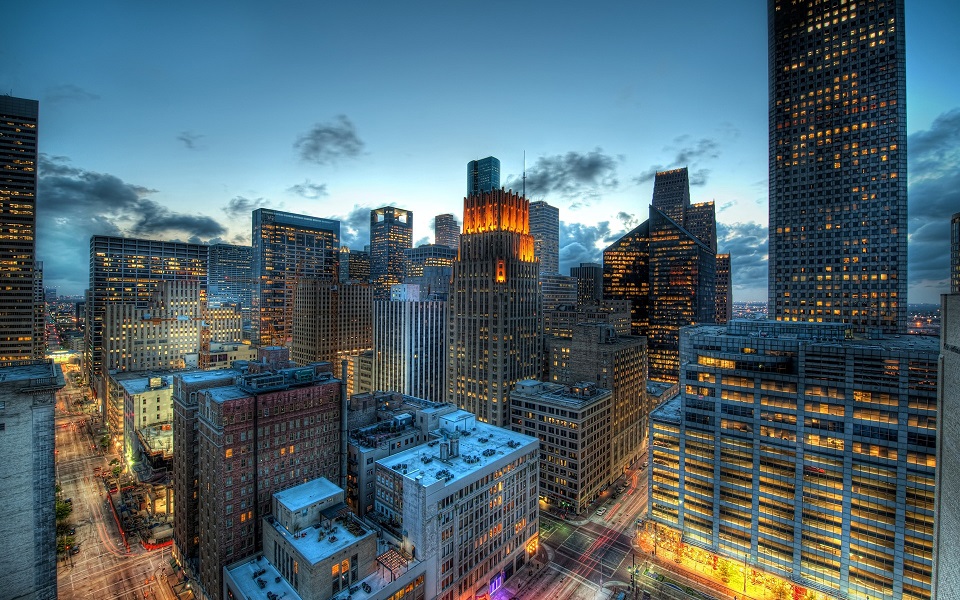
Houston's ever growing mortal population makes it not only the political capital of the New Republic of Texas, it is also one of the few cities in North America where the resident population of undead can expand without the threat of either overpopulation or violent political coups. Currently, Houston serves as a haven to 87 Kindred of the Camarilla, a few individuals of the independent clans and what remains of the dispossessed Camarilla court of Dallas-Fort Worth. However, the two decades old Siege of Houston by the Mexican Sabbat has caused regular turnover at all levels of Kindred society save for its prince and Primogen. -- Galen, Primogen of Clan Ventrue
Kindred Court of Houston
- Alejandro Kaufer -- Ventrue Prince of Houston
- Isabel Manara -- Gangrel Seneschal of Houston
The Primogen Council
- Martiné -- Brujah Primogen of Houston
- Ruth McGinley -- Malkavian Primogen of
- Don Carlos -- Nosferatu Primogen of Houston

Sobriquet: My Lord,...sire,...your Grace and ...that damn Spaniard! (by those who hate him).
Appearance:
Behavior:
History:
Recent Events:
Carson Longbaugh -- Toreador Primogen of Houston
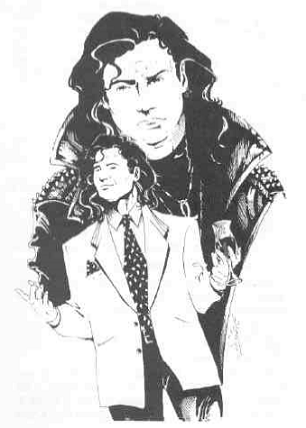
Sobriquet: Mister Longbaugh while in Elysium, but just plain Carson the rest of the time.
Appearance: A medium-size man with sandy blond hair and a mustache. Carson has a deep, mellow voice and favors Western-style suits, Stetson hats and Tony Lama cowboy boots.
Behavior: Carson is a rarity among vampires, laid-back and mellow, nothing ever seems to bother him. He has a strong Texas accent, as every word slides out in a deep drawl and Carson always has a slight, enigmatic smile on his face.
History: Carson was born in Brownsville, Texas in 1880. His father was said to be none other than Harry Longbaugh, the Sundance Kid. Carson never knew because his father was never around. As a boy, Carson used to hang around the saloons and bordellos and listen to the music. He loved music, and it was his escape from the poverty of his life.
Carson got his firs guitar when he was just ten years old. By the time he was twelve, he was performing on the streets of Brownsville, where his snappy patter and smooth voice soon made him a popular figure. In 1906, he was playing music halls throughout the Southwest, and it was said that he could sing and play through the roughest brawls and gunfights. Nothing seemed to rattle him.
As the years wore on, so did Carson. The big break always seemed to elude him. No matter how smooth his patter or sharp his playing, Carson seemed doomed to always be a second-stringer. He had just about resigned himself to this fate, when his life changed forever.
Lorena was a Toreador Anarch. She spotted Carson playing a little dive in Los Angeles in 1916. She took a fancy to the cowboy blues singer. Carson couldn't believe that someone as pretty as Lorena would take a liking to him, but they became lovers. She offered him a chance to spend all eternity with her. It seemed like a good idea to Carson and she Embraced him. They stayed together for five years before disaster struck, Lorena was hunted down by the Prince of Los Angeles. Knowing that the end was near, she commanded Carson to go to San Francisco, hoping he would be safe there.
With blood tears in his eyes, Carson packed his bags and hit the road. He arrived at the Vampire Club and stayed there until the Kuei-jin conquest of San Francisco. At the time, none of the Kindred of San Francisco knew anything about the Toreador Texan with the golden tonsils. He just showed up one night in 1921 carrying a guitar and a burlap bag full of his belongings. For a while, he played down in the Black Hole and became close friends with Sebastian Melmoth. He had an easy confident way with both the kine and with Kindred, and as a result of this, Sebastian asked him in 1923 if he would like to become the night manager of the legendary Alexandrian Club. Carson accepted and served in that role for over eighty years.
But, the Kuei-jin invasion of San Francisco changed everything. Before the Camarilla knew what had hit them, the Cathayans had slain the prince and primogen. Carson thought over his options carefully, he hated the Kuei-jin for killing his friend Sebastian, but he was always more a lover than a fighter, and as such he decided that retreating was the better part of valor.
For a few years he wandered through the Northwest, then down into the Four Corners region, later onto the Panhandle and finally back to his beloved Texas. In 2009 he visited Dallas and just couldn't reconcile his memories of the old town with the vast and overcrowded metropolis of the twenty-first century. He had already decided to move on when the prince of Dallas gave him the boot. Carson figured he had nothing to lose and drifted south through the little towns of central Texas and entered Houston in 2011. The prince of Houston wasn't very welcoming, but then again, he didn't chase Carson out of town on a rail either.
After a decade of rubbing shoulders with the Kindred of Houston, Carson decided to put down roots and re-established the Alexandrian Club in his own image. As the eldest Toreador, he had the right to the title of Primogen and took the position with the approval of his fellow artists. Not long after, he summoned his childe Alice Babylon to join him in Houston and she built the Desert Rose Cantina to honor her sire's life as a cowboy guitarista. Despite the fall of Dallas to the Sabbat in 2013, Carson has found a deep measure of happiness in Houston and he has decided that if the Sabbat do come calling, this time he will fight and if necessary die rather than give up that which he has built.
Recent Events:
Constantin Addams -- Tremere Primogen of Houston
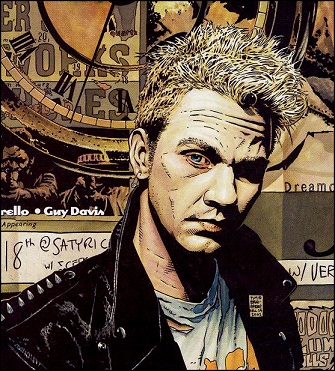
Sobriquet: Primogen or Lord in public and Mr. Addams or Constantin in private venues.
Appearance:
Behavior:
History: Famed developer of the Faux Path.
Recent Events:
Galen of Pergamon -- Ventrue Primogen of Houston & Kindred Physician
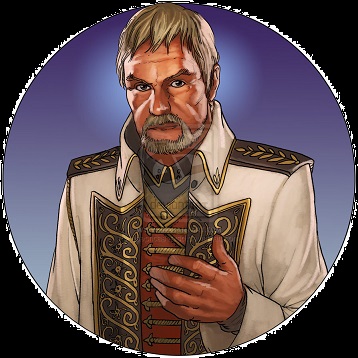
Quote: Dealing with the Followers of Set is, in effect, dealing with the Devil. Yes, they have their uses, but then so does an atomic bomb. Like said A-bomb, the Setites should be handled with extreme caution.
Sobriquet: Primogen, Physician or simple Galen depending on who is addressing the Primogen and the circumstances.
Appearance: Galen stands out in a crowd, regardless of what crowd he might be in, he stands out. Among the Kindred, he stands out by having been embraced in his mortal senescence, late sixties or early seventies. The second reason is his archaic style of dress, for Galen often wears a variety costumes and uniforms similar to those of a historical nature and varying from ancient Rome to the early 20th century. This unique behavior draws a certain amount of bemused criticism from his younger Kindred and from the mortals who interact with him, despite this, or perhaps in-spite of this, Galen continue to luxuriate in the costumes of his past and by doing so he has earned a grudging degree of respect from the callow neonates of Houston.
Physically, Galen appears to be a nearly perfect specimen of an elderly male in excellent health. He is quite short for the modern age, standing just about five foot tall and weighing no more than a hundred and forty pounds. Though quite clearly not an athlete, he does appear to be in excellent physical condition. His hair is a dark silver, which is coiffed in oiled ringlets across his forehead, but is otherwise simply kept. He also sports a neatly trimmed silver beard that delineates his face rather than concealing some imagined defect and his arching silver eyebrows frame dark brown eyes that convey centuries of empathy and experience. He wears no jewelry whatsoever, though he does often wear a variety of bladed weapons that accessorize his historical costumes.
Behavior: Galen radiates solidity, and regardless of the circumstances, a deep and abiding calm that is both infections and sedative in nature. While given to a certain degree of pomp and circumstance, which seems easily forgivable in a creature his age, Galen can be surprisingly forthright and direct in conversation. He is also unusual in that he bears a distinct sardonic sense of humor, but with a carefully calculated degree of acerbic amusement for those less fortunate than himself and for those he finds unworthy, a downright caustic vitriol. Despite this, Galen is characterized by his empathy, not only for the mortal masses, but for his fellow Kindred and he can be surprisingly kind to the other vampires of Houston, if a touch patronizing in a pedagogic fashion. Though clearly well meaning, he is extremely cautious of the other Kindred, often to the degree of paranoia, for in the past or so he claims, his well meaning empathy was mistaken for pity with dire results.
History: Aelius Galenus or Claudius Galenus, better known as Galen of Pergamon was a prominent Greek physician, surgeon and philosopher in the Roman empire.Arguably the most accomplished of all medical researchers of antiquity, Galen influenced the development of various scientific disciplines, including anatomy, physiology, pathology, pharmacology, and neurology, as well as philosophy and logic.
The son of Aelius Nicon, a wealthy architect with scholarly interests, Galen received a comprehensive education that prepared him for a successful career as a physician and philosopher. He traveled extensively, exposing himself to a wide variety of medical theories and discoveries before settling in Rome, where he served prominent members of Roman society and eventually was given the position of personal physician to several emperors.
Galen's understanding of anatomy and medicine was principally influenced by the then-current theory of humorism, as advanced by ancient Greek physicians such as Hippocrates. His theories dominated and influenced Western medical science for more than 1,300 years. His anatomical reports, based mainly on dissection of monkeys, especially the Barbary Macaque, and pigs, remained uncontested until 1543, when printed descriptions and illustrations of human dissections were published in the seminal work De humani corporis fabrica by Andreas Vesalius where Galen's physiological theory was accommodated to these new observations. Galen's theory of the physiology of the circulatory system endured until 1628, when William Harvey published his treatise entitled De motu cordis, in which he established that blood circulates, with the heart acting as a pump. Medical students continued to study Galen's writings until well into the 19th century. Galen conducted many nerve ligation experiments that supported the theory, which is still accepted today, that the brain controls all the motions of the muscles by means of the cranial and peripheral nervous systems.
Galen saw himself as both a physician and a philosopher, as he wrote in his treatise entitled That the Best Physician is also a Philosopher. Galen was very interested in the debate between the rationalist and empiricist medical sects, and his use of direct observation, dissection and vivisection represents a complex middle ground between the extremes of those two viewpoints. Many of his works have been preserved and/or translated from the original Greek, although many were destroyed and some credited to him are believed to be spurious. Although there is some debate over the date of his death, he was no younger than seventy when he died.
Early life: AD 129–161
Galen's name Γαληνός, Galēnos comes from the adjective "γαληνός", "calm".
Galen describes his early life in On the affections of the mind. He was born in September 129 AD; his father, Aelius Nicon, was a wealthy patrician, an architect and builder, with eclectic interests including philosophy, mathematics, logic, astronomy, agriculture and literature. Galen describes his father as a "highly amiable, just, good and benevolent man". At that time Pergamon (modern-day Bergama, Turkey) was a major cultural and intellectual center, noted for its library (Eumenes II), second only to that in Alexandria, and attracted both Stoic and Platonic philosophers, to whom Galen was exposed at age 14. His studies also took in each of the principal philosophical systems of the time, including Aristotelian and Epicurean. His father had planned a traditional career for Galen in philosophy or politics and took care to expose him to literary and philosophical influences. However, Galen states that in around 145 AD his father had a dream in which the god Asclepius (Aesculapius) appeared and commanded Nicon to send his son to study medicine. Again, no expense was spared, and following his earlier liberal education, at 16 he began studies at the prestigious local sanctuary or Asclepieum dedicated to Asclepius, god of medicine, as a θεραπευτής (therapeutes, or attendant) for four years. There he came under the influence of men like Aeschrion of Pergamon, Stratonicus and Satyrus. Asclepiea functioned as spas or sanitoria to which the sick would come to seek the ministrations of the priesthood. The temple at Pergamon was eagerly sought by Romans in search of a cure. It was also the haunt of notable people such as Claudius Charax the historian, Aelius Aristides the orator, Polemo the sophist, and Cuspius Rufinus the Consul.
In 148, when he was 19, his father died, leaving him independently wealthy. He then followed the advice he found in Hippocrates' teaching and traveled and studied widely including such destinations as Smyrna (now Izmir), Corinth, Crete, Cilicia (now Çukurova), Cyprus, and finally the great medical school of Alexandria, exposing himself to the various schools of thought in medicine. In 157, aged 28, he returned to Pergamon as physician to the gladiators of the High Priest of Asia, one of the most influential and wealthiest men in Asia. Galen claims that the High Priest chose him over other physicians after he eviscerated an ape and challenged other physicians to repair the damage. When they refused, Galen performed the surgery himself and in so doing won the favor of the High Priest of Asia. Over his four years there he learned the importance of diet, fitness, hygiene and preventive measures, as well as living anatomy, and the treatment of fractures and severe trauma, referring to their wounds as "windows into the body". Only five deaths among the gladiators occurred while he held the post, compared to sixty in his predecessor's time, a result that is in general ascribed to the attention he paid to their wounds. At the same time he pursued studies in theoretical medicine and philosophy.
Later years: AD 162–217
Galen went to Rome in 162 and made his mark as a practicing physician. His impatience brought him into conflict with other doctors and he felt menaced by them. His demonstrations there antagonized the less able and original physicians in the city. They plotted against him and he feared he might be driven away or poisoned, so he left the city.
Rome engaged in foreign wars in 161. Marcus Aurelius and his colleague Lucius Verus were in the north fighting the Marcomanni. During the autumn of 169 when Roman troops were returning to Aquileia, the great plague broke out, and the emperor summoned Galen back to Rome. He was ordered to accompany Marcus and Verus to Germany as the court physician. In the following spring Marcus was persuaded to release Galen after receiving a report that Asclepius was against the project. He was left behind to act as physician to the imperial heir Commodus. It was here in court that Galen wrote extensively on medical subjects. Ironically, Lucius Verus died in 169, and Marcus Aurelius himself died in 180, both victims of the plague.
Galen was the physician to Commodus for much of the emperor’s life and treated his common illnesses. According to Dio Cassius 72.14.3–4, in about 189, under Commodus’ reign, a pestilence occurred, the largest of which he had knowledge, in which 2,000 people died in Rome each day. It is most likely that this was the same plague that struck Rome during Marcus Aurelius’ reign.
Galen became physician to Septimius Severus during his reign in Rome. Galen compliments Severus and Caracalla on keeping a supply of drugs for their friends and mentions three cases in which they had been of use in 198.
The Antonine Plague
The Antonine Plague was named after Marcus Aurelius’ family name of Antoninus. It was also known as the Plague of Galen and holds an important place in medicinal history because of its association with Galen. Galen had first hand knowledge of the disease. He was in Rome when it struck in 166 AD, and was also present in the winter of 168–69 during an outbreak among troops stationed at Aquileia. He had experience with the epidemic, referring to it as very long lasting, and describes its symptoms and his treatment of it. Unfortunately, his references to the plague are scattered and brief. Galen was not trying to present a description of the disease so that it could be recognized in future generations; he was more interested in the treatment and physical effects of the disease. For example, in his writings about a young man afflicted with the plague, he concentrated on the treatment of internal and external ulcerations. According to Niebuhr "this pestilence must have raged with incredible fury; it carried off innumerable victims. The ancient world never recovered from the blow inflicted upon it by the plague that visited it in the reign of M. Aurelius." The mortality rate of the plague was 7–10 percent; the outbreak in 165–6–168 would have caused approximately 3.5 to 5 million deaths. Otto Seek believes that over half the population of the empire perished. J. F. Gilliam believes that the Antonine plague probably caused more deaths than any other epidemic during the empire before the mid-3rd century. It is believed that the Antonine Plague was smallpox, because though his description is incomplete, Galen gave enough information to enable a firm identification of the disease.
Galen notes that the exanthema covered the victim’s entire body and was usually black. The exanthem became rough and scabby where there was no ulceration. He states that those that were going to survive developed a black exanthem. According to Galen, it was black because of a remnant of blood putrefied in a fever blister that was pustular. His writings state that raised blisters were present in the Antonine plague, usually in the form of a blistery rash. Galen states that the skin rash was close to the one Thucydides described. Galen describes symptoms of the alimentary tract via a patient’s diarrhea and stools. If the stool was very black, the patient died. He says that the amount of black stools varied. It depended on the severity of the intestinal lesions. He observes that in cases where the stool was not black, the black exanthema appeared. Galen describes the symptoms of fever, vomiting, fetid breath, catarrh, cough, and ulceration of the larynx and trachea.
Eudemus
When Peripatetic philosopher Eudemus became ill with Quartan fever, Galen felt obliged to treat him "since he was my teacher and I happened to live nearby." Galen wrote: "I return to the case of Eudemus. He was thoroughly attacked by the three attacks of quartan ague, and the doctors had given him up, as it was now mid-winter." Some Roman physicians criticized Galen for his use of the prognosis in his treatment of Eudemus. This practice conflicted with the then-current standard of care, which relied upon divination and mysticism. Galen retaliated against his detractors by defending his own methods. Garcia-Ballester quotes Galen as saying: "In order to diagnose, one must observe and reason. This was the basis of his criticism of the doctors who proceeded alogos and askeptos." However, Eudemus warned Galen that engaging in conflict with these physicians could lead to his assassination. "Eudemus said this, and more to the same effect; he added that if they were not able to harm me by unscrupulous conduct they would proceed to attempts at poisoning. Among other things he told me that, some ten years before, a young man had come to the city and had given, like me practical demonstrations of the resources of our art; this young man was put to death by poison, together with two servants who accompanied him."
Garcia-Ballester says the following of Galen’s use of prognosis: "In modern medicine, we are used to distinguishing between the diagnostic judgment (the scientific knowledge of what a patient has) and the prognostic judgment (the conjecture about what will happen to him.) Galen, like the Hippocratics, was not. For him, to understand a clinical case technically, ‘to diagnose’, was among other things, to know with greater or lesser certainty the outcome for the patient, ‘to prognosticate’. Prognosis, then, is one of the essential problems and most important objectives of Galenic diagnosis. Galen was concerned to distinguish it from divination or prophecy, both to improve diagnosis technically and to enhance the physician’s reputation.
His Death
The 11th-century Suda lexicon states that Galen died at the age of 70, which would place his death in about the year 199. However, there is a reference in Galen's treatise "On Theriac to Piso" (which may, however, be spurious) to events of 204. There are also statements in Arabic sources that he died at age 87, after 17 years studying medicine and 70 practicing it, which would mean he died about 217. Nutton believes that "On Theriac to Piso" is genuine, that the Arabic sources are correct, and that the Suda has erroneously interpreted the 70 years of Galen's career in the Arabic tradition as referring to his whole lifespan. Boudon-Millot more or less concurs and favors a date of 216.
Recent Events:
- -- <<Galen's Statistics>>
Stevie Reno -- Sheriff of Houston

Quote: "Assamite Antitribu? What's the difference? A killer's a killer. Maybe these guys are even more untrustworthy than their independent kin, but how can you tell where Assamites are concerned?"
Sobriquet: The Butcher of Houston...
Appearance:
Behavior:
History:
Recent Events:
- -- Stevie Reno
Everett Thig -- Keeper of Elysium in Houston
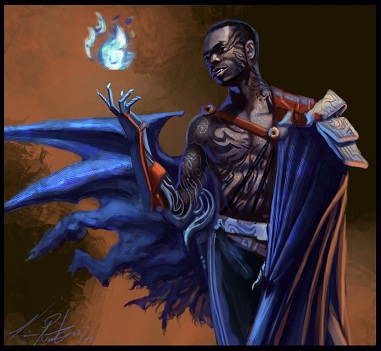
Quote: "Oh, right, like there is any such thing as Blood Brothers. And we drink infant's eyeball fluid and bite the heads off bats and take out our ribs so we can blow ourselves, too. For Caine's sake, isn't there anything you fools think the Tremere haven't done?"
Sobriquet: The...Keeper of Elysium
Appearance:
Behavior:
History:
Recent Events:
Gordon Crush Lawler -- The New Ventrue Scourge of Houston
Appearance:
Behavior:
History:
Recent Events:
- -- <<Gordon Crush Lawler's Statistics>>
The Rank and File Kindred of Houston
Heather Dowd -- Brujah Revolutionary and Local Hero
Appearance:
Behavior:
History:
Recent Events:
- -- <<Heather Dowd's Statistics>>
Lucia d'Avilla -- Malkavian Aristocrat and Spanish Transplant
Appearance:
Behavior:
History:
Recent Events:
- -- <<Lucia d'Avilla's Statistics>>
Peter the Cockroach -- Nosferatu Resident and Professional Tunnel Digger
Appearance:
Behavior:
History:
Recent Events:
- -- <<Peter the Cockroach's Statistics>>
Abe -- The Scar
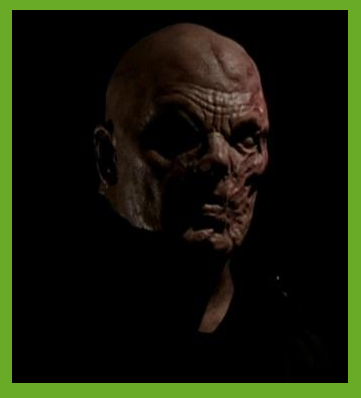
Sobriquet: The Scar -- for all the scar-tissue left behind by the chemical burns.
Appearance: Abe was clearly victim of some sort of industrial chemical accident. His entire body is one large scar from a nearly lethal exposure to some sort of caustic chemical. His Embrace into Clan Nosferatu is treated as an act of mercy by his sire Peter the Cockroach.
Behavior:
History:
Recent Events:
- -- <<Abe the Scar's Statistics>>
Alice Babylon -- Toreador Neonate of Houston, progeny of Carson Longbaugh and owner of the Desert Rose Cantina
Appearance:
Behavior:
History:
Recent Events:
- -- <<Alice Babylon's Statistics>>
Cinda Lowell -- Toreador Novelist and Local Harpy

Sobriquet: Ms.Lowell (polite), Cinda (friendly), Novelist (chilly), Anne Rice (rude).
Appearance:
Behavior:
History:
Recent Events:
- -- <<Cinda Lowell's Statistics>>
Athosides -- Tremere Regent and Noteworthy Archivist
Appearance:
Behavior:
History:
Recent Events: Tremere Regent of the Seventh Circle, newly promoted upon the death of his predecessor.
- -- Athosides
Dennis Rundgren -- Ventrue Securities Broker
Appearance:
Behavior:
History:
Recent Events:
- -- <<Dennis Rundgren's Statistics>>
Camarilla Guests - & - The Survivors of Dallas-Fort-Worth
Crenshaw Ghast -- Former Primogen of Dallas and Elder Refugee
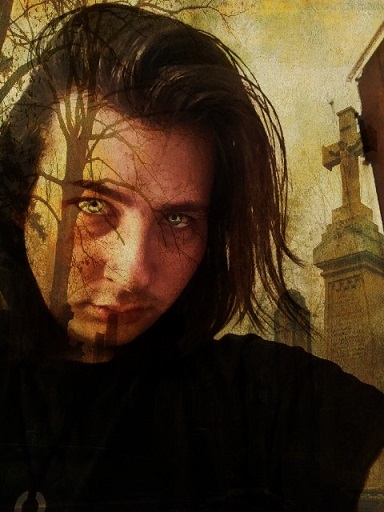
Quote: Of the darkness we are all born. The demons and wraiths are your siblings and the lupines are your cousins. All which is supernatural was born of the Queen of Night: Lilith, our dark mother. One night she will return, as she has before in legend, to murder her children and reclaim the power she has lent us for our short, macabre unlifetimes. We must prepare for her; we must discover ourselves in her teachings, for all our dilemmas, and the solutions to them, reside in her.
Sobriquet: Primogen...Er...Elder...Mr.Ghast?
Appearance:
Behavior:
History:
Recent Events:
- -- <<Crenshaw Ghast's Statistics>>
Pitch Bend -- Malkavian Guitarist and Dallas Refugee
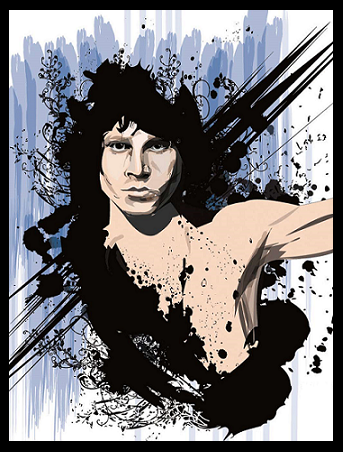
Sobriquet: Dallas (distant), Strings (friendly), Freak (crazy).
Appearance: Imagine Jim Morrison with greasy dark hair, no shirt, tattoos & piercings, wearing a beat-up black leather jacket and really tight black leather pants worn with black gator-skin cowboy-boots -- then, stop imagining. He carries a guitar case everywhere with him and believe it or not, it actually contains an electric guitar which Pitch plays as often as he can find a plug-in for his bass amp.
Behavior:
History:
Recent Events:
- -- <<Pitch Bend's Statistics>>
Mort -- Nosferatu Agent Provocateur and Refugee from Dallas
Appearance:
Behavior:
History:
Recent Events:
- -- <<Mort's Statistics>>
The Independent Clans in Houston
The Giovanni (2)
- -- Paul Di Carlo -- "Don" of Houston for the Giovanni- After the recent destruction of Enzo Giovanni by a Giovanni hit squad Paul has been left in the city to adminster what is left of their business interests. He has been given temporary domain in Galveston.
- -- Edwardo Putanesca -- A Putanesca bodyguard and professional driver.
Assamites of Houston (1)
- -- Evans Rogers -- Freelance Assamite Bodyguard -- Currently on assignment in Houston.
Deceased Vampires of Houston
- -- Enzo Giovanni -- Giovanni Elder of Houston.
Stories of the Houston Undead
- -- Baghdad on the Bayou
- -- 2032 Houston Battle Plan -- B.E.Zieger's Plan & Process for Successfully Assassinating or Capturing Zion Vangonni.
The Umbra of Lone-Star
- -- Chasm Star -- A muse of inspiration to the criminal underworld of Houston and fast approaching the status of something akin to a god, for the criminal elite.
Websites
http://vampirerpg.free.fr/Genealogy/
http://en.wikipedia.org/wiki/Houston
http://www.houstonarchitecture.com/haif/best-content/
http://forum.skyscraperpage.com/showthread.php?t=151881
http://www.marinelink.com/news/maritime/offshore-technology-conference.aspx
